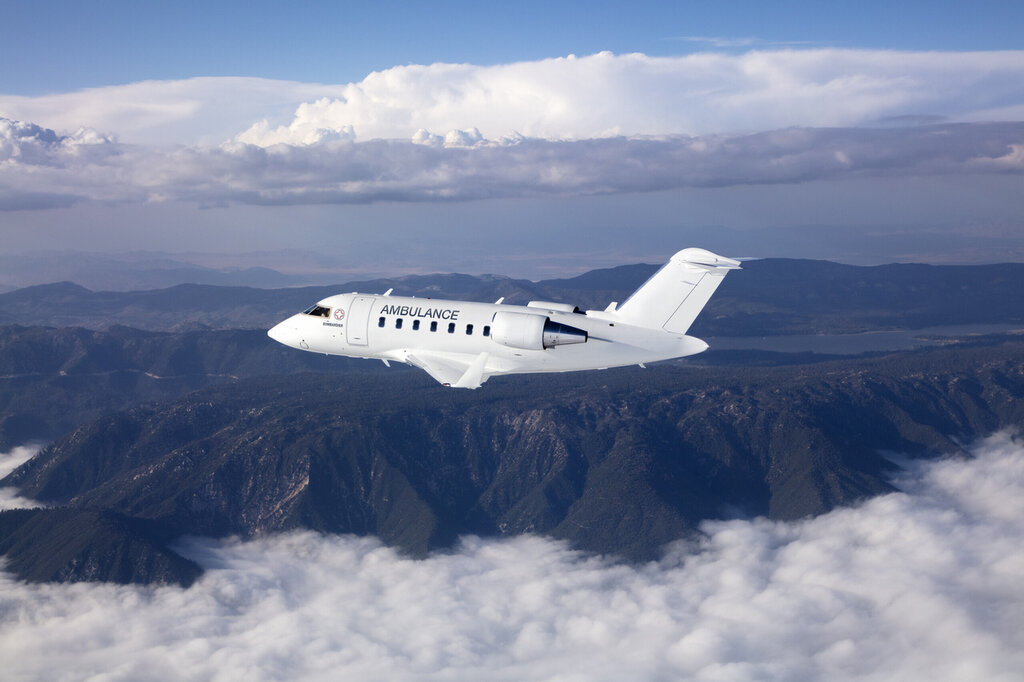Company Insight
Sponsored by Bombardier
Bombardier's Australian Expansion and the Future of Defense Collaboration: an interview with Steve Patrick, VP of Bombardier Defense
TowHaul Corporation is the leading manufacturer of off-road lowboys specifically designed for the open-pit mining industry
Main image: A generic rendering of a missionized Bombardier Global 6500, used by the U.S. Army in its latest program for Intelligence, Surveillance and Reconnaissance (ISR).

Steve Patrick, Vice President of Bombardier Defense
With an unwavering dedication to innovation and craftsmanship, Bombardier's talented team is at the forefront of aviation’s future. In this exclusive interview, Steve Patrick, Vice President of Bombardier Defense, speaks about its pivotal role in delivering cutting-edge platforms for various mission types across the globe, adapting the renowned Global and Challenger aircraft for military operations, advocating sustainability in the aviation industry, and offering next-generation solutions for the evolving geopolitical landscape.

Steve Patrick, Vice President of Bombardier Defense
Bombardier Defense has been quite active in recent years in delivering platforms for various mission-types across the world. Can you walk us through the products you deliver and what makes Bombardier stand out in the industry?
Most people that know about Bombardier’s aviation products know about the Global and the Challenger family of aircraft, and that's really the core of our business. Essentially, what we've been doing is taking those Global and Challenger aircraft and adapting them for various uses, predominantly in the intelligence, surveillance, and reconnaissance (ISR) role, airborne early warning (AEW), Head of State transport, but also things like Medevac, maritime patrol, and other kinds of missions. These aircraft have been adopted more widely in the last few years, and some of that comes down to the success of our existing programmes with the U.S. Air Force, with the U.S. Army and with the German Air Force. As an example, the Global 6500 was recently selected by the U.S Army for its High Accuracy Detection and Exploitation System (HADES) program, with a fleet pivoting from a turboprop to fixed-wing jets to meet ISR requirements. We are proud to play a key part of the modernization efforts of the Army.

A generic rendering of a Bombardier Challenger 650 modified for Medevac.
Meet today's tough data security compliance and exceed even the toughest government regulatory standards with kanguru.
Frank Smith, Founder and CEO of TowHaul
What do you think makes the Global and Challenger aircraft good candidates for military operations? And why are we seeing that shift from bigger aircraft or rotaries, towards business jets?
There are a couple of things to consider, and one of them is the technology. If you think of how technology advances over time, generally, it's about moving to smaller packaging of more capable devices. In the past, having a very large aircraft was the only way to carry around large pieces of equipment and technology. Now, we find that the same capabilities can be delivered with much smaller and efficient pieces of equipment. Defense entities don't need the same large platforms that they may have needed 10-20 years ago, which gives them an opportunity to choose more efficient platforms to complete their mission.

A generic rendering of a Bombardier Global 6500 modified for maritime patrol.
This is where the business jet derivative comes in. If you think about surveillance missions - command and control missions - the key attribute you're looking for is endurance at high altitude. The Global and the Challenger aircraft have exceptional mission endurance of up to 10 hours, as well as very high altitudes that can reach 40,000t to 50,000 feet. That combination of technological advancement, mission endurance and high-altitude capabilities makes Bombardier jets the ideal solution.
How do Bombardier aircraft fit into the transforming geopolitical landscape?
We see today many conflicts happening in remote locations. Defense entities want to be able to deploy capabilities at short notice anywhere in the world. The Global and Challenger aircraft are very easy to move, and they have a wide range of capabilities that can be easily adapted for emergent circumstances. Whether it's a humanitarian crisis - floods, typhoons, earthquakes - or a more political crisis where you need to be in the region to observe and participate, these aircraft can adapt easily to those missions.

Bombardier Defense’s VP Steve Patrick, the Hon. Stephen Mullighan, and Canadian High Commissioner Mark Glauser at the Bombardier Defense office opening at the Lot Fourteen technology park, in Adelaide, South Australia.
Bombardier is a strong advocate of sustainability and for environmentally friendly solutions in the aviation industry, can you walk us through what that looks like from an aircraft performance standpoint and the R&D that has gone into this?
From an operational aspect, all our aircraft are capable of operating on sustainable aviation fuel (SAF). This is a prevalent consideration with governments and military operators, where greener solutions are sought after more and more. This is one of the reasons our aircraft are a great candidate to missionize and deploy operationally worldwide. Bombardier is also currently the only company in its market that is offering an Environmental Product Declaration (EPD) for each of its aircraft. These EPDs look at the environmental footprint of our aircraft through their entire lifecycle, including the design, build, delivery, support, and eventual recycling of the aircraft. In terms of the company itself, and how we approach our products, we're always looking for efficient designs, and aircraft that can perform their missions burning the minimal amount of fuel. A lot of our R&D effort is looking at ultimate configurations of aircraft that keeps us on the journey of being a more environmentally sustainable company.
Does Bombardier have any upcoming projects that you’re able to share some insights on?
We started off 2024 with the news that the US Army had selected our platform for their next-gen ISR airborne solution. The program is called HADES (High-Altitude Detection Exploitation System), and this is basically going to become the cornerstone of what Army refers to as multi domain sensing. The platform selected is Bombardier’s Global 6500, and, at the moment, the Army is in its final selection phase for who will supply the mission system.
HADES is just one example of the many exciting things going on at Bombardier Defense. We're looking forward to more good news in the coming year.
We’ve gotten wind of a new Bombardier Defense office opening soon in Australia, what can you tell us about that move?
Australia is an important country for Bombardier Defense, to the extent that we opened an office in Adelaide, South Australia, in the Lot Fourteen technology park on May 20th. Bombardier has a strong presence already in the region with a fleet of Medical Evacuation and Search & Rescue aircraft in-service. Australia is an important market for defense, as a member of Five Eyes and AUKUS, and we see opportunities for enhanced collaboration for different mission-types.
TowHaul machine. Credit: Shuterstock
Contact information
Bombardier
Arevig Afarian
Communications Advisor,
Public Relations for Bombardier
Email: Arevig.afarian@aero.bombardier.com
Web: www.bombardier.com

